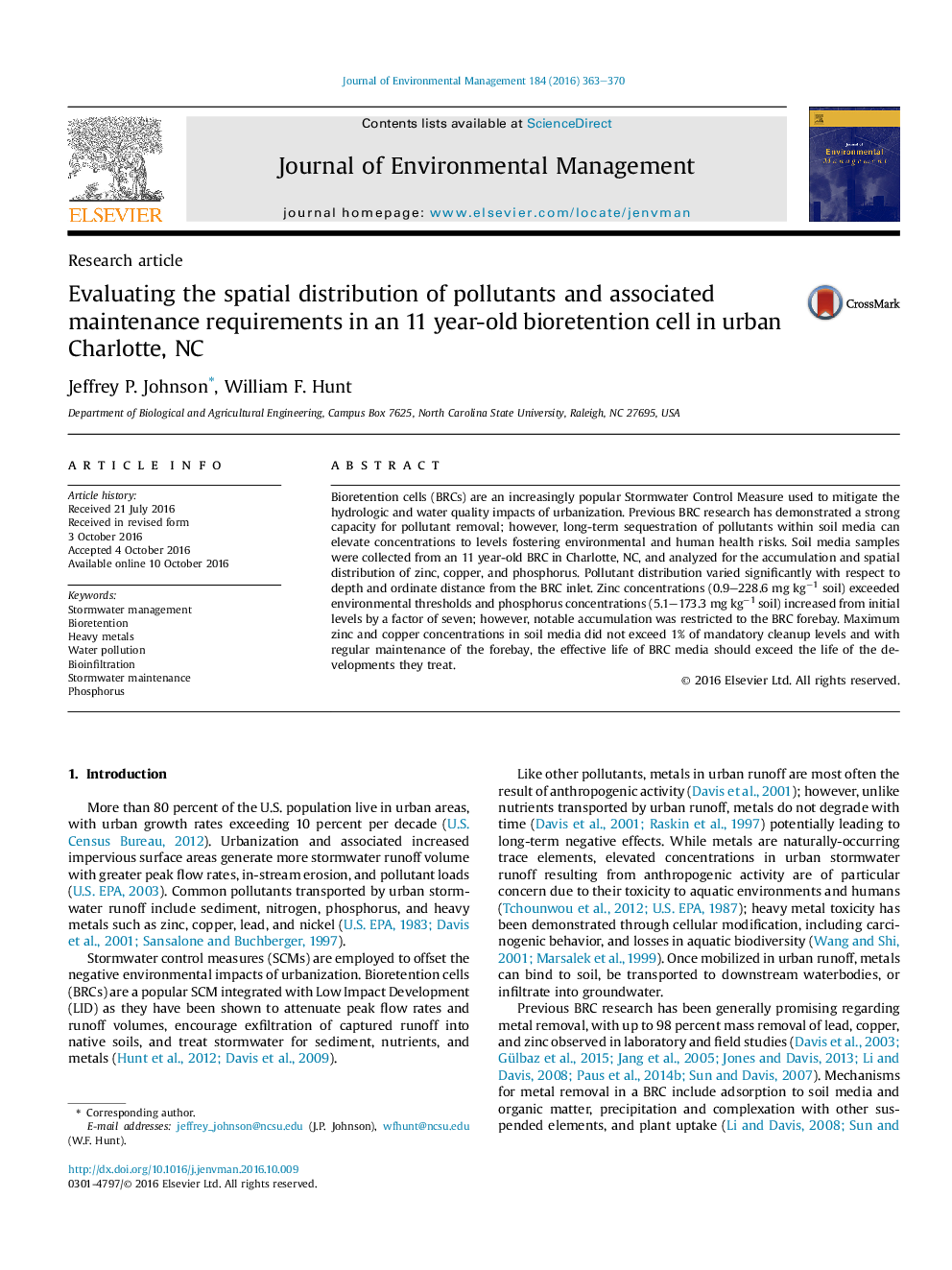| Article ID | Journal | Published Year | Pages | File Type |
|---|---|---|---|---|
| 5117101 | Journal of Environmental Management | 2016 | 8 Pages |
â¢Soil samples from an 11-year old bioretention cell in Charlotte, NC were analyzed.â¢Accumulation of zinc, copper, and phosphorus in soil media was characterized.â¢Sampled zinc concentrations were above protective ecological thresholds.â¢Initial phosphorus concentrations increased by a factor of seven.â¢Maintained, the lifespan of the bioretention cell is predicted to exceed 300 years.
Bioretention cells (BRCs) are an increasingly popular Stormwater Control Measure used to mitigate the hydrologic and water quality impacts of urbanization. Previous BRC research has demonstrated a strong capacity for pollutant removal; however, long-term sequestration of pollutants within soil media can elevate concentrations to levels fostering environmental and human health risks. Soil media samples were collected from an 11 year-old BRC in Charlotte, NC, and analyzed for the accumulation and spatial distribution of zinc, copper, and phosphorus. Pollutant distribution varied significantly with respect to depth and ordinate distance from the BRC inlet. Zinc concentrations (0.9-228.6 mg kgâ1 soil) exceeded environmental thresholds and phosphorus concentrations (5.1-173.3 mg kgâ1 soil) increased from initial levels by a factor of seven; however, notable accumulation was restricted to the BRC forebay. Maximum zinc and copper concentrations in soil media did not exceed 1% of mandatory cleanup levels and with regular maintenance of the forebay, the effective life of BRC media should exceed the life of the developments they treat.
